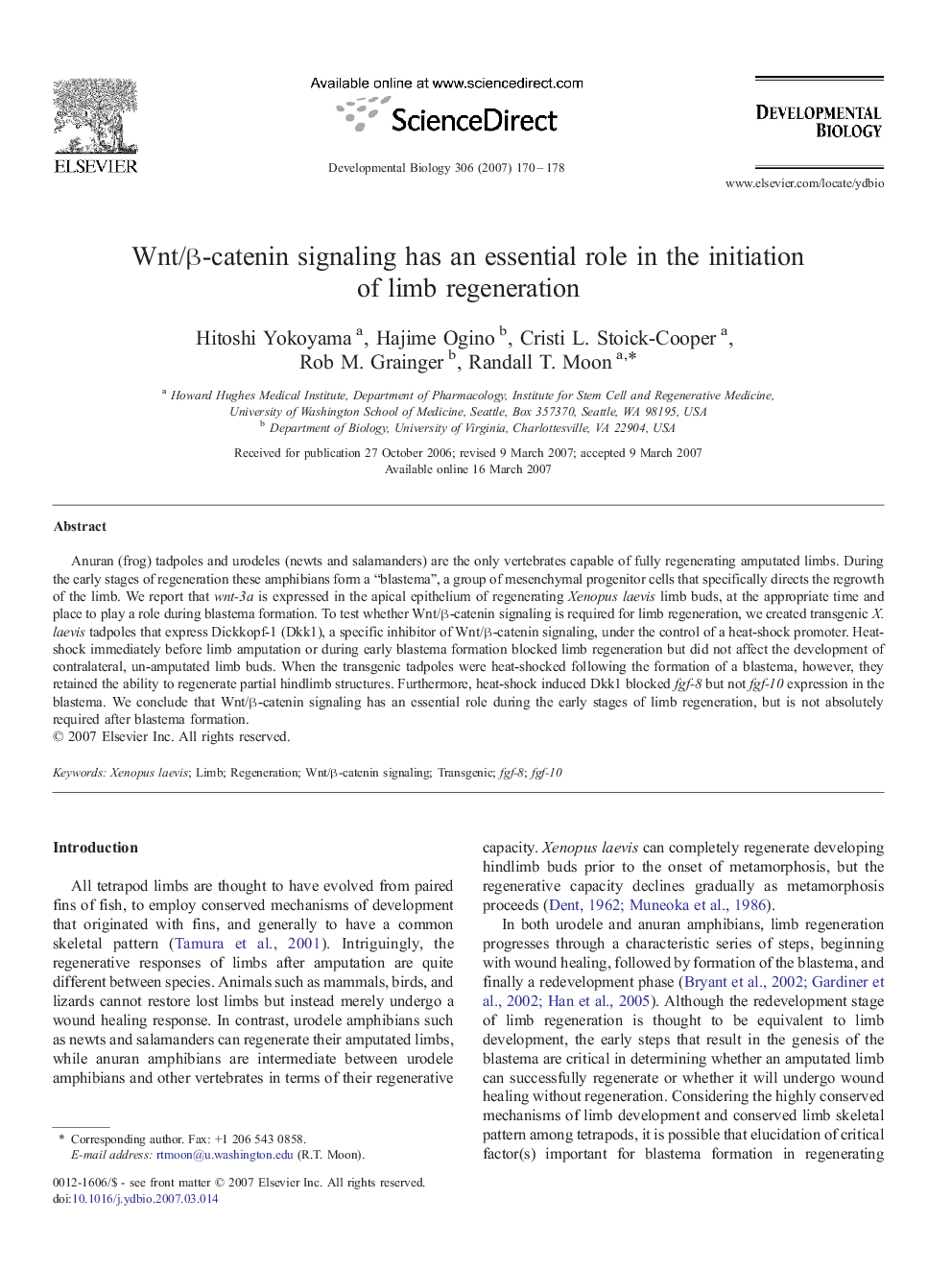| Article ID | Journal | Published Year | Pages | File Type |
|---|---|---|---|---|
| 2175112 | Developmental Biology | 2007 | 9 Pages |
Anuran (frog) tadpoles and urodeles (newts and salamanders) are the only vertebrates capable of fully regenerating amputated limbs. During the early stages of regeneration these amphibians form a “blastema”, a group of mesenchymal progenitor cells that specifically directs the regrowth of the limb. We report that wnt-3a is expressed in the apical epithelium of regenerating Xenopus laevis limb buds, at the appropriate time and place to play a role during blastema formation. To test whether Wnt/β-catenin signaling is required for limb regeneration, we created transgenic X. laevis tadpoles that express Dickkopf-1 (Dkk1), a specific inhibitor of Wnt/β-catenin signaling, under the control of a heat-shock promoter. Heat-shock immediately before limb amputation or during early blastema formation blocked limb regeneration but did not affect the development of contralateral, un-amputated limb buds. When the transgenic tadpoles were heat-shocked following the formation of a blastema, however, they retained the ability to regenerate partial hindlimb structures. Furthermore, heat-shock induced Dkk1 blocked fgf-8 but not fgf-10 expression in the blastema. We conclude that Wnt/β-catenin signaling has an essential role during the early stages of limb regeneration, but is not absolutely required after blastema formation.
